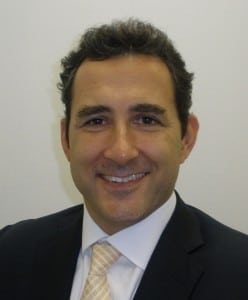Latest News
[Via Satellite 02-23-2015] SpeedCast, a Hong Kong-based global satellite communications provider with a large presence in the Asia-Pacific is evaluating ways to leverage capacity from new High Throughput Satellite (HTS) systems coming online around the world. In January the company partnered with O3b Networks to provide Ka-band HTS capacity to Papua New Guinea. Other HTS partners include Intelsat with its EpicNG HTS debut slated for early 2016, and Inmarsat with its three-satellite Global Xpress constellation, which is now two thirds complete. Speaking to Via Satellite, SpeedCast CEO Pierre-Jean Beylier highlighted mobility markets where the company sees value in adding HTS services.
“[We are] certainly interested to look at HTS for cellular backhaul applications,” he said. “In countries like Pakistan, Afghanistan Indonesia and Malaysia, we’re keen to see what we can do with HTS capacity.”
Beylier said the dominant need for C band to provide satellite services in voice networks has limited the use of HTS in such applications today. Other bands are not as effective at meeting the reliability and availability required. SpeedCast typically uses C band for backup services in the Asia-Pacific as well, particularly when fiber is only comprised of one or two cables. Beylier expects greater diversity in spectrum could open up more doors.
“C band is the preferred band, so I look forward to HTS developments in the C-band arena. Intelsat has that on their roadmap, and that will be quite interesting, but we try to do Ku band as well, and potentially even Ka band with O3b, which for certain parts of our cellular backhaul solutions could be interesting, in particular data traffic,” he said.
Beylier described SpeedCast as frequency agnostic, adding that availability is the key criterion. The company has global networks in C and in Ku band, and could use HTS to overlay existing networks for more demanding services.
“In the offshore oil and gas sector there is a need for significant amounts of bandwidth as well, and even more than cellular backhaul, availability will be key,” said Beylier. “That’s an area where we have to do more work to offer the availability that those customers need, maybe by combining HTS Ku band or Ka band with some C band, until HTS C band capacity becomes available.”
SpeedCast is also evaluating ways to provide various kinds of new IT services. Beylier said he sees this as an early stage trend in the industry — for satellite communications providers to take on more outsourced solutions — but one that will gain momentum over the next three to five years. SpeedCast already provides a large suite of value added services such as network monitoring and support, and will work with customers to extend VSAT networks through terrestrial technologies such as microwave and wireless. Expanding further into IT requires greater resources, but Beylier views this as an essential step to stay competitive.
“I think the value of a service provider is much more than an uplink and a VSAT hub. Those who do only that, yes they should be worried,” he said.
SpeedCast has completed several notable acquisitions in recent years, including Australia Satellite Communications in 2012, Elektrikom Satellite Services and Pactel International in 2013, and Oceanic Broadband in 2014. The majority of the company’s Merger and Acquisition (M&A) activity has been in the Asia Pacific. SpeedCast now provides services in almost every Pacific island nation. Beylier declined to comment on any future M&A plans or inclinations, but said the companies purchased in recent years have had a defining impact.
“Acquisitions have influenced a change in SpeedCast. None of the companies were for sale, they were selected to fill gaps in our approach to the market and compliment what SpeedCast was already doing,” he said.
Get the latest Via Satellite news!
Subscribe Now